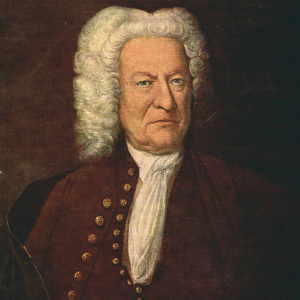GENERAL MUSIC periods 1,2,3
OBJECTIVE: MUSICAL ALPHABET AND THE KEYBOARD
....MUSICAL ALPHABET GRAPHING WORKSHEET(CONTINUED)
....1. Sheet #2: Students will determine the direction of the musical alphabet at the beginning of each graph and complete
the musical alphabet in the proper direction. Colors (one for each of the 7 letters) will be added in as before. (Sheet
#3 is extra credit. It is similar to Sheet #2)
....2. Sheet #4: Finding patterns
........a. Patterns are found in music everywhere; often there are patterns within patterns. This exercise is to give an idea
of how musical sounds are arranged to create anywhere from simple to complex patterns.
........b. Musical patterns are mathematical try to find the mathematical formulas in each pattern.
........c. Locate the musical alphabet patterns in each pattern (forward or backwards).
........d. Using your color key as before color in the squares. The colors you see are also colors you hear.
MUSICAL ALPHABET WORD SHEET
Pass out musical alphabet word sheets (leave in folder to work on after graphs are completed)
Using the musical alphabet letters only see how many words you can find. Letters can be repeated or used more than once, names, and abbreviations as well. Write down only words properly used in a classroom atmosphere.
Musical alphabet applied to the keyboard:
Pass out pentatonic song sheets.
We will be playing songs using only the black keys on the keyboard [pentatonic term means 5 in reference to the 5 black (sharp and flat) keys on a keyboard]
On the sheet students will see a variety of pentatonic (black key only) songs with only the starting pitch name given. Students are to sing the song to themselves and then try to figure out the location of the keys on the keyboard by playing them by "ear" (a method where the musician plays songs without ever having read the music). In the beginning playing by "ear" takes training ("ear training") by experimentation/trial and error.
To do this you must be able to locate the starting pitch key (in theses examples they will be flats). The procedure for doing this if the names of the keys on the keyboard are not memorized is by: 1. Locate "D" (white key) as a starting point for the musical alphabet. Use the musical alphabet forward or backwards to locate the white key letter name related to the flat pitch indicated as the start of the song.
Behavior and use of class keyboards explained.
Assignment at the keyboards:
1. Be able to locate all the "D's" on the keyboard.
2. Be able to find the starting "flat" key for the song chosen
3. try to play the song "by ear." When completed try other songs. Teacher will be checking.
Applying the musical alphabet on the keyboard.
ADVANCED VIOLIN
OBJECTIVE: BOWING PROPORTIONS and "HARVEST FESTIVAL" MUSIC
....TUNING
....WARM-UP ........1. Cycle of Strings
..............a. Single Bows Upper Half (UH).
..............b. Single Bows Lower Half (LH).
..............c. Bow Proportioning (W=WHOLE/ UH=UPPER HALF/ LH=LOWER HALF)
..................1)Bow to the rhythm of the words "My Sis-ter Marc-y"
..................2)Perform the pattern 2x each string (note)
..................3)Start down bow and continue with the bowing as it comes
..................4)Use this pattern of bow proportions: W--UH-UH-W--W--/W--LH-LH-W--W--//
....NOTE READING REVIEW
........1. Review line-space musical alphabet rule to read the notes on the musical staff:
A line to the very next space or a space to the very next line (step-wise motion) going up is one note higher in the
musical alphabet and a line to the very next space or a space to the very next line (step-wise motion) going
down is one note lower in the musical alphabet.
........2. Review treble clef note reading.
............a. Treble Clef is often called the "G" clef because it is a symbol which looks like a fancy "G" and because the circle portion of the "G" goes around line 2 of the music staff which is the line that represents the note "G"
........3. Review bass clef note reading.
.............a. Bass Clef is often called the "F" clef because it is a symbol that looks like a fancy "F" and because the two
small dots (which help create the look of the"F") located above and below line 4 of the music staff are
emphasizing (or in a way) pointing towards line 4 which represents the note "F."
....SONG: "HASTE TO THE WEDDING"
........1. For sight reading and review everyone will read the double bass part (music is prepared for the different
instrumentations in the proper clefs for each instrument.)
............a. First read the notes out loud.
............b. Play with the accompaniment.
This to be continued tomorrow.)
BEGINNING VIOLIN
OBJECTIVE: RHYTHMIC INTRODUCTION
....APPLICATION OF QUARTER NOTES, QUARTER NOTE RESTS, EIGHTH NOTES IN PAIRS IN A RHYTHMIC
SONG: "ALLEY CAT" (CONTINUED)
........1. Review counting of quarters, quarter rests, eighth notes in pairs.
........2. Introduce concepts of:
............a. Meter: The mathematical formula at the beginning of a piece of music which determines the amount of beats in a
musical section or measure
............b. Measure: A section of music, measured by a mathematic formula given by the meter.
............c. Bar Line: The line(s) that divides the music notation into sections or measures.
............d. Measures Rest: A symbol for a measure of rest (a section of the music not played by a particular instrument)
with a number above it indicating more than 1 measure of rest. (In "Alley Cat" the music begins with 4
measures of rest.)
....EXTENSION OF "ALLEY CAT" RHYTHMIC SONG:
........1. After learning the left and right body percussion directions from the last lesson the body percussion will be
replaced with percussion instruments:
..............a. Left hand body percussion becomes wood sounding instruments (indicated by notes being the color black).
..............b. Right hand body percussion becomes scraping instruments (indicated by notes being the color red).
..............c. Triangles added at certain locations (indicated by a blue colored "X") replacing some quarter rests.
........2. Students count all the notes but only play on their specific instrument's color.
..............a. It is encouraged for students to count out loud as they play to help keep a focused concentration.
........3. Teacher points to the notes to help with tracking. (Student volunteers then become pointers to help class track.)
........4. Students perform rhythmic song without tracking help; each student responsible to count for themselves while
playing with the accompaniment.
(Tomorrow a little look at violin history and starting to learn the parts of the instrument.)











